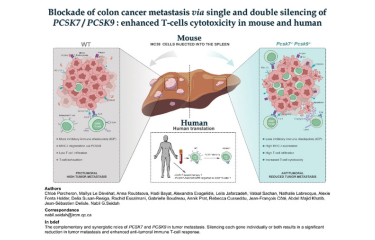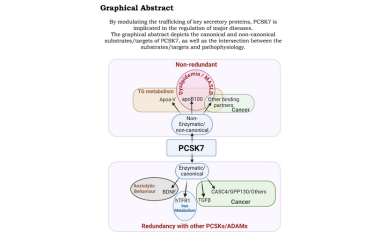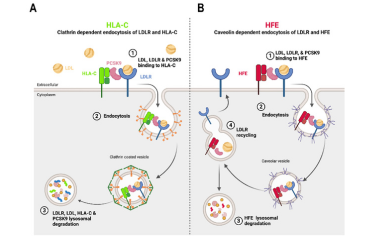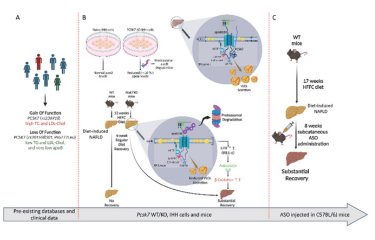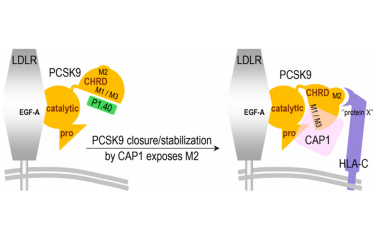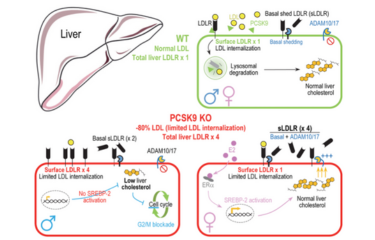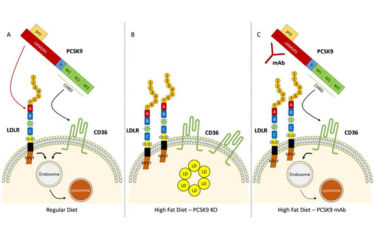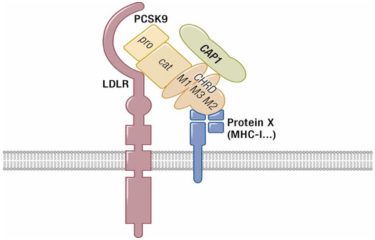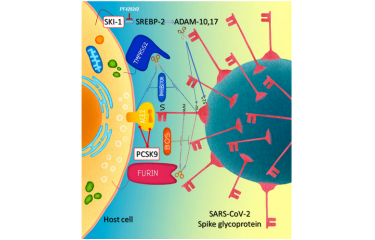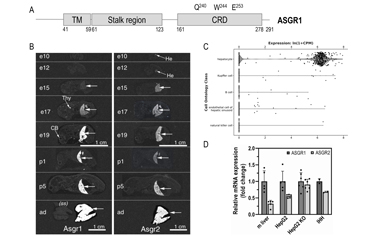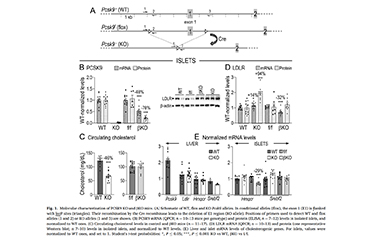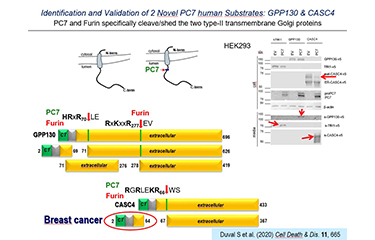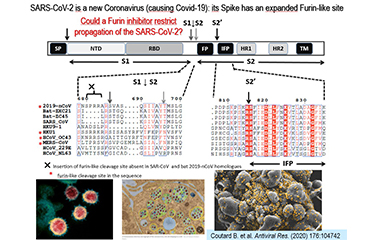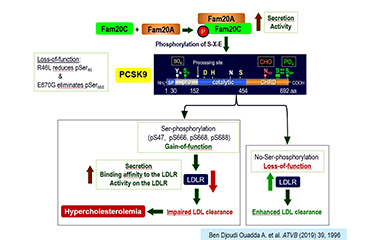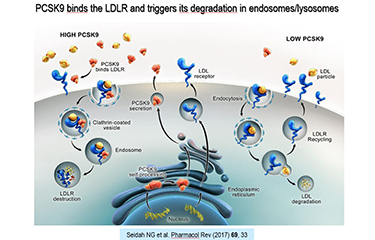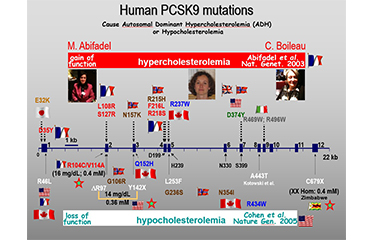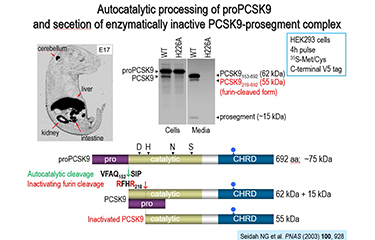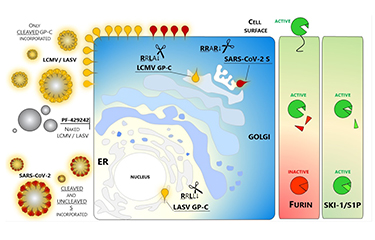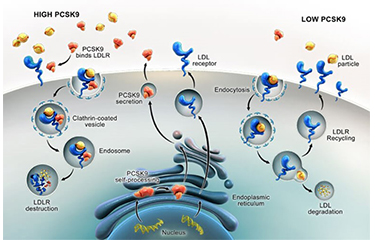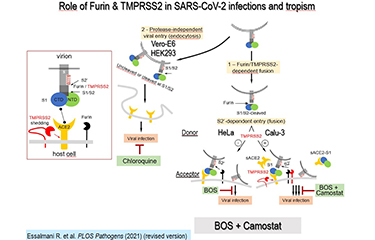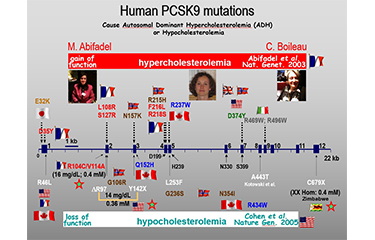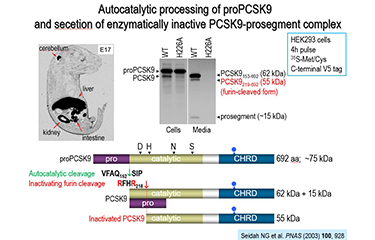
-
Careers • News • Contact us •
- Login
- Français
Creating new
knowledge
Exploring new avenues to develop tomorrow’s medical knowledge through an approach that integrates basic and clinical research
Our research units are led by principal investigators who collaborate in a spirit of collegiality and with the vision of bridging the gap between research and patients. They train the next generation of scientists and are independent and creative minds who work tirelessly to improve health.
Current research
"Our research focuses on clinical applications of inhibitors of convertases in the treatment and diagnostic of major pathologies, such as cardiovascular diseases, cancer/metastasis and viral infections."
Nabil G. Seidah, research director
Biochemical Neuroendocrinology
Our research focuses on a family of nine mammalian protein convertases (PCs): PC1, PC2, Furin, PC4, PC5, PACE4, PC7, SKI-1 and PCSK9. These enzymes are involved in the activation of hormone precursors, growth or transcription factors, receptors, or envelope proteins for pathogenic agents. The team is concentrating on the activation mechanism and regulation of these enzymes, and on the identification of their substrates and potential inhibitors. We are also deciphering in details the in vivo physiological roles of the PCs in cells, in mice and in human.
Our group aims to explore the clinical implications of the proprotein convertases in disease states, as for PCSK9 in hypercholesterolemia. Our team uses a broad range of techniques: protein and peptide biochemistry, enzymology, molecular and cell biology, proteomics, and genetics.
The laboratory possesses a unique collection of PC mutants and has complete and/or conditional knockouts in mice on PCSK5, Furin, PCSK7 and PCSK9. PCSK9 is a special target for the treatment of familial hypercholesterolemia. Anti-PCSK9 treatments are now available worldwide. We have also identified a new role of PCSK9 inhibition in the treatment of cancer/metastasis and some viral infections. We recently discovered a new role for PCSK7 in triglyceride regulation and fatty liver disease and are developing antisense oligonucleotide silencing approaches to treat this pathology. The key roles SKI-1 and PCSK9 play in cholesterol homeostasis have led the team to expand its horizons and devote considerable efforts to developing pharmacological applications related to cardiovascular and cardiometabolic diseases.
We have demonstrated the critical role of Furin-like convertases in the activation of the cellular entry of SARS-CoV-2, the ethological agent of COVID-19. Small molecule inhibitors are now available for pre-clinical studies as antivirals in anticipation of future pandemics.
We also demonstrated that PCSK7 regulates triglycerides via enhanced degradation of ApoA-V. Its absence reduces the levels of hepatic apoB and lipid droplets and enhances recovery from hepatic steatosis, providing novel preclinical validation for the treatment of NASH.
We recently investigated the implication of PCSK9 and PCSK7 in cancer and metastasis. Our findings demonstrate that the loss of expression of either PCSK9, PCSK7, or both convertases results to a drastic reduction in tumor growth and hepatic metastasis.
| Team |
|
| Affiliations |
|
| Degrees and experience |
|
| Publications |
|
Roles of proproptein convertases in health an disease
Functional profiling
Each convertase and its inhibitors/silencers are tested in cells and animal models and finally in human patients.
Biochemistry and Genomics
The mechanism of action of each convertase and the identification of physiological and pathological substrates and/or targets in disease states.
Disease modeling
Use mouse KO and transgenics and human SNPs and variants as guides to functional significance of each convertase and potential treatments in a clinical setting.
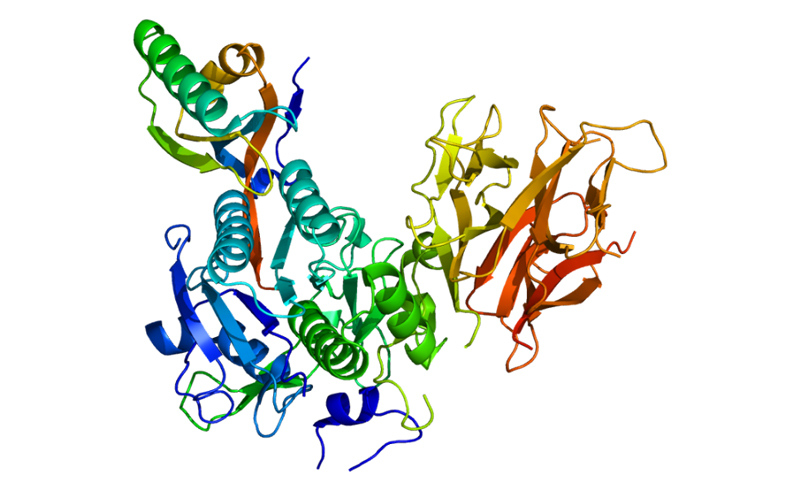
Important Discoveries
|
2025 Blockade of colon cancer metastasis via single and double silencing of PCSK7 / PCSK9: enhanced T-cells cytotoxicity in mouse and human |
|
2025 The Biology and Clinical Implications of PCSK7 |
|
2024 Insights into PCSK9-LDLR regulation and trafficking via the differential functions of MHC-I proteins HFE and HLA-C |
|
2024 PCSK7: a Novel Regulator of Apolipoprotein B and a Potential Target Against Non-Alcoholic Fatty Liver Disease |
|
2023 Molecular interactions of PCSK9 with an inhibitory nanobody, CAP1 and HLA-C: functional regulation of LDLR levels |
|
2022 PCSK9 deficiency results in a specific shedding of excess LDLR in female mice only: role of hepatic cholesterol |
|
2022 Expanding Biology of PCSK9: Roles in Atherosclerosis and Beyond |
|
2022 The multifaceted roles of PCSK9 |
|
2022 Distinctive roles of Furin and TMPRSS2 in SARS-CoV-2 infectivity |
|
2021 Asialoglycoprotein receptor 1 is a novel PCSK9-independent ligand of liver LDLR cleaved by Furin |
|
2021 Substantial PCSK9 inactivation in β-cells does not modify glucose homeostasis or insulin secretion in mice - PubMed (nih.gov) |
|
2021 How do enveloped viruses exploit the secretory proprotein convertases for infectivity and spread? - PubMed (nih.gov) |
|
2020 Shedding of cancer susceptibility candidate 4 by the convertases PC7/furin unravels a novel secretory protein implicated in cancer progression - PubMed (nih.gov) |
|
2020 The spike glycoprotein of the new coronavirus 2019-nCoV contains a furin-like cleavage site absent in CoV of the same clade - PubMed (nih.gov) |
|
2017 The Proprotein Convertases in Hypercholesterolemia and Cardiovascular Diseases: Emphasis on Proprotein Convertase Subtilisin/Kexin 9 - PubMed (nih.gov) |
|
2003 Mutations in PCSK9 cause autosomal dominant hypercholesterolemia - PubMed (nih.gov) |
|
2003 The secretory proprotein convertase neural apoptosis-regulated convertase 1 (NARC-1): liver regeneration and neuronal differentiation - PubMed (nih.gov) |
Tools
|
The multifaceted biology of PCSK9 |
|
How Do Enveloped Viruses Exploit the Secretory Proprotein Convertases to Regulate Infectivity and Spread? - PubMed (nih.gov) |
|
The Proprotein Convertases in Hypercholesterolemia and Cardiovascular Diseases: Emphasis on Proprotein Convertase Subtilisin/Kexin 9 - PubMed (nih.gov) |
|
Implications of Spike-glycoprotein processing at S1/S2 by Furin, at S2’ by Furin and/or TMPRSS2 and shedding of ACE2: cell-to-cell fusion, cell entry and infectivity of SARSCoV- 2 |
|
Furin cleaves SARS-CoV-2 spike-glycoprotein at S1/S2 and S2’ for viral fusion/entry: indirect role of TMPRSS2 | bioRxiv |
|
The biology and therapeutic targeting of the proprotein convertases - PubMed (nih.gov) |
|
Mutations in PCSK9 cause autosomal dominant hypercholesterolemia - PubMed (nih.gov) |
|
The secretory proprotein convertase neural apoptosis-regulated convertase 1 (NARC-1): liver regeneration and neuronal differentiation - PubMed (nih.gov) |
| Grants |
CIHR (Grant Projet) #191678 CQDM#SYN-366 CIHR (Foundation Scheme Grant) #148363 CANADA RESEARCH CHAIR HOLDER: 950-231335 CIHR Team Grant # HAL 157986: CIHR Project Grant Économie, Sciences et Innovation Québec (PSO2/PSO3) CIHR Project Grant |
| Recognitions and honors |
|
Join the
group Research
Available positions
Ongoing clinical studies
Research Partners
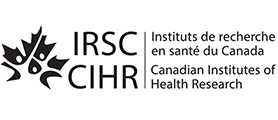


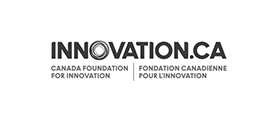

Life in the
laboratory

© Montreal Clinical Research Institute, Année.All rights reserves. | Privacy policy | Terms of use | Web site by Agence Riposte


